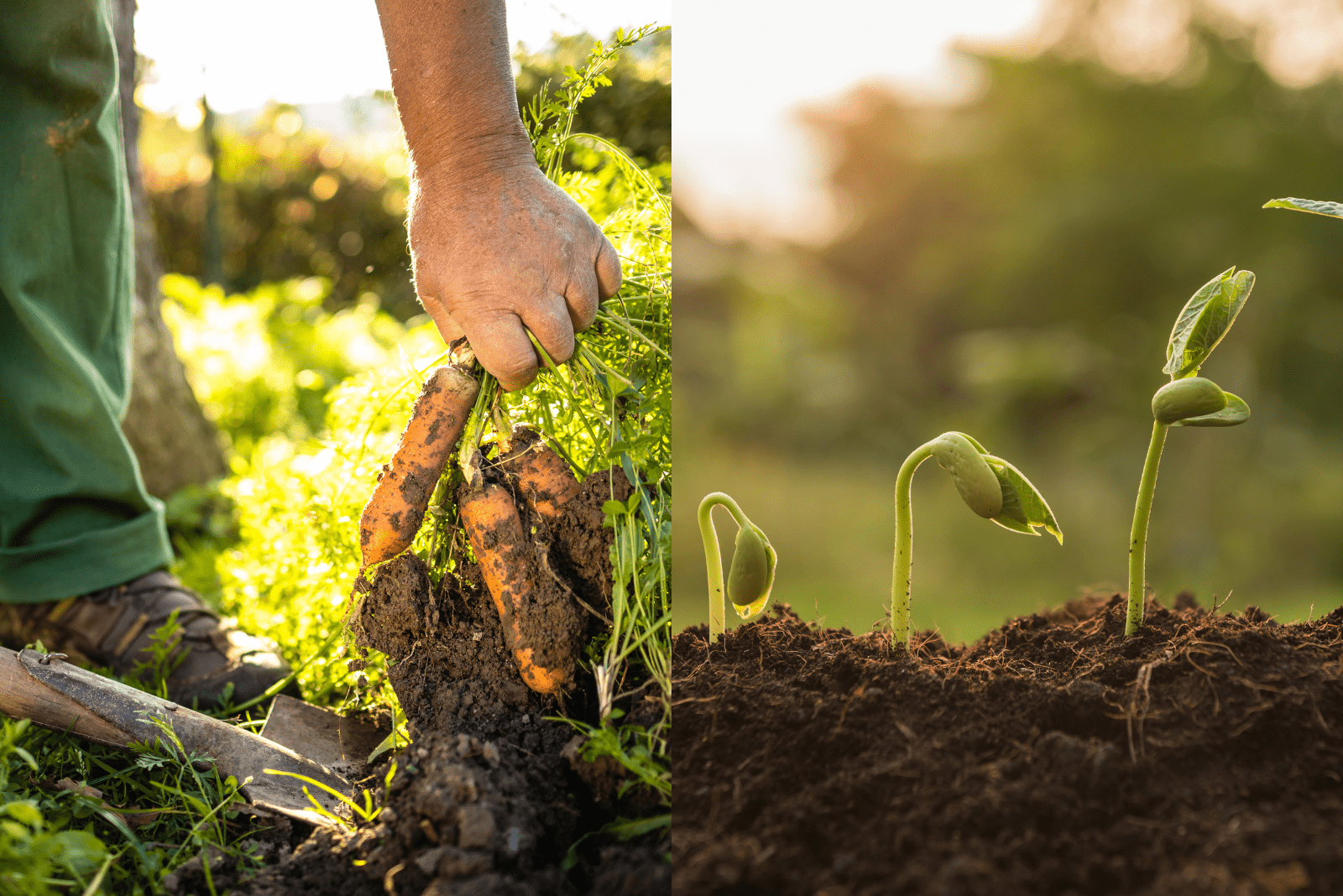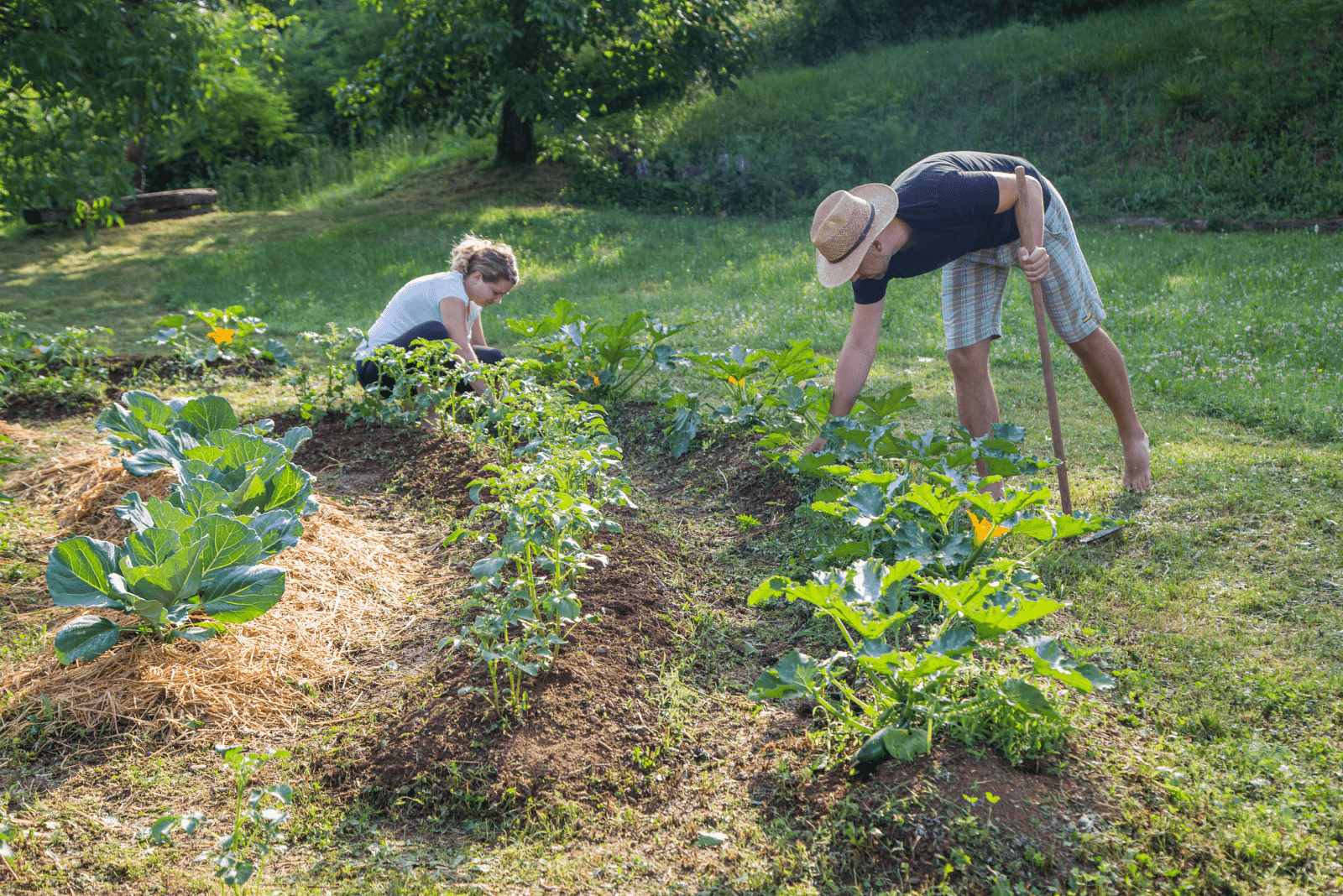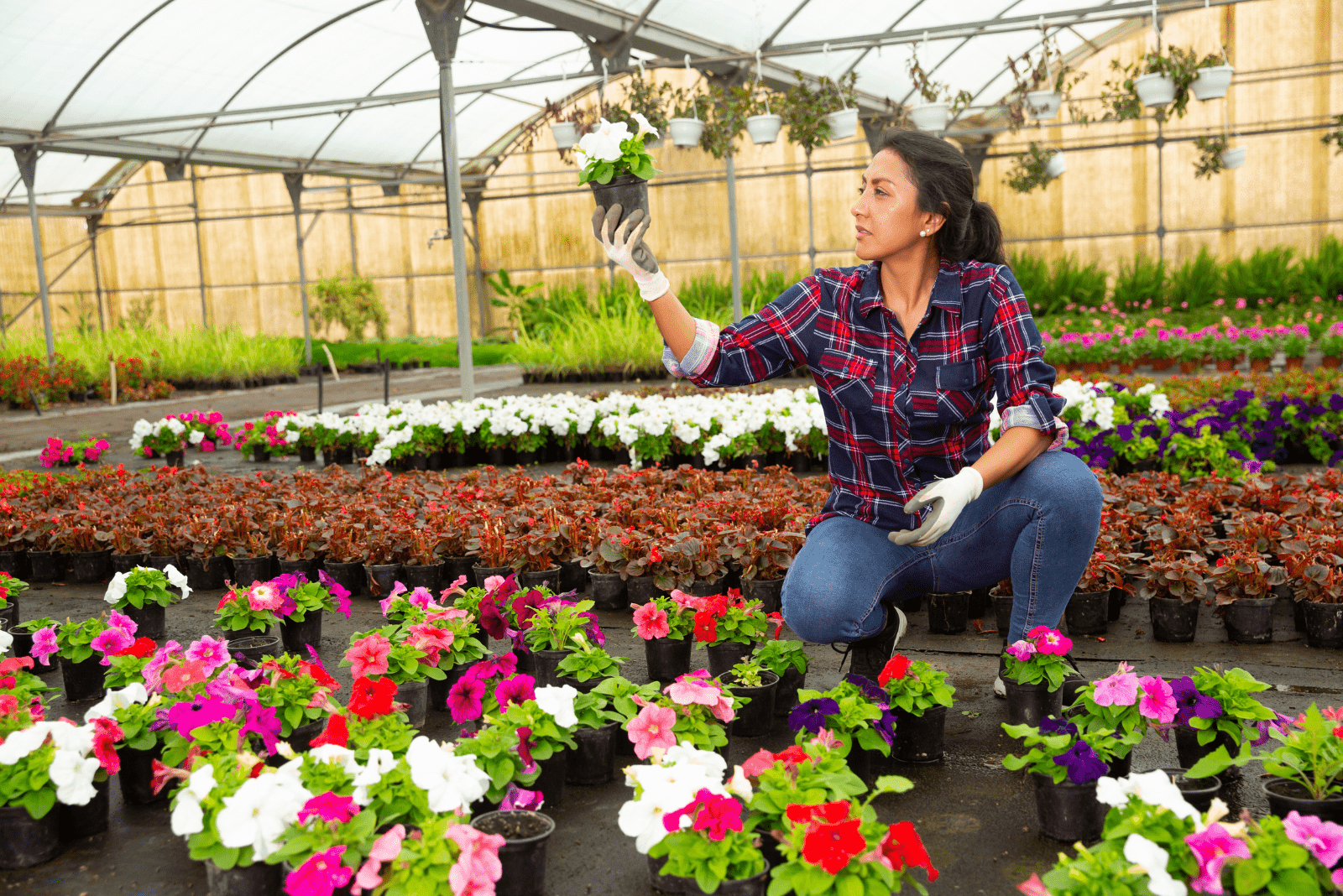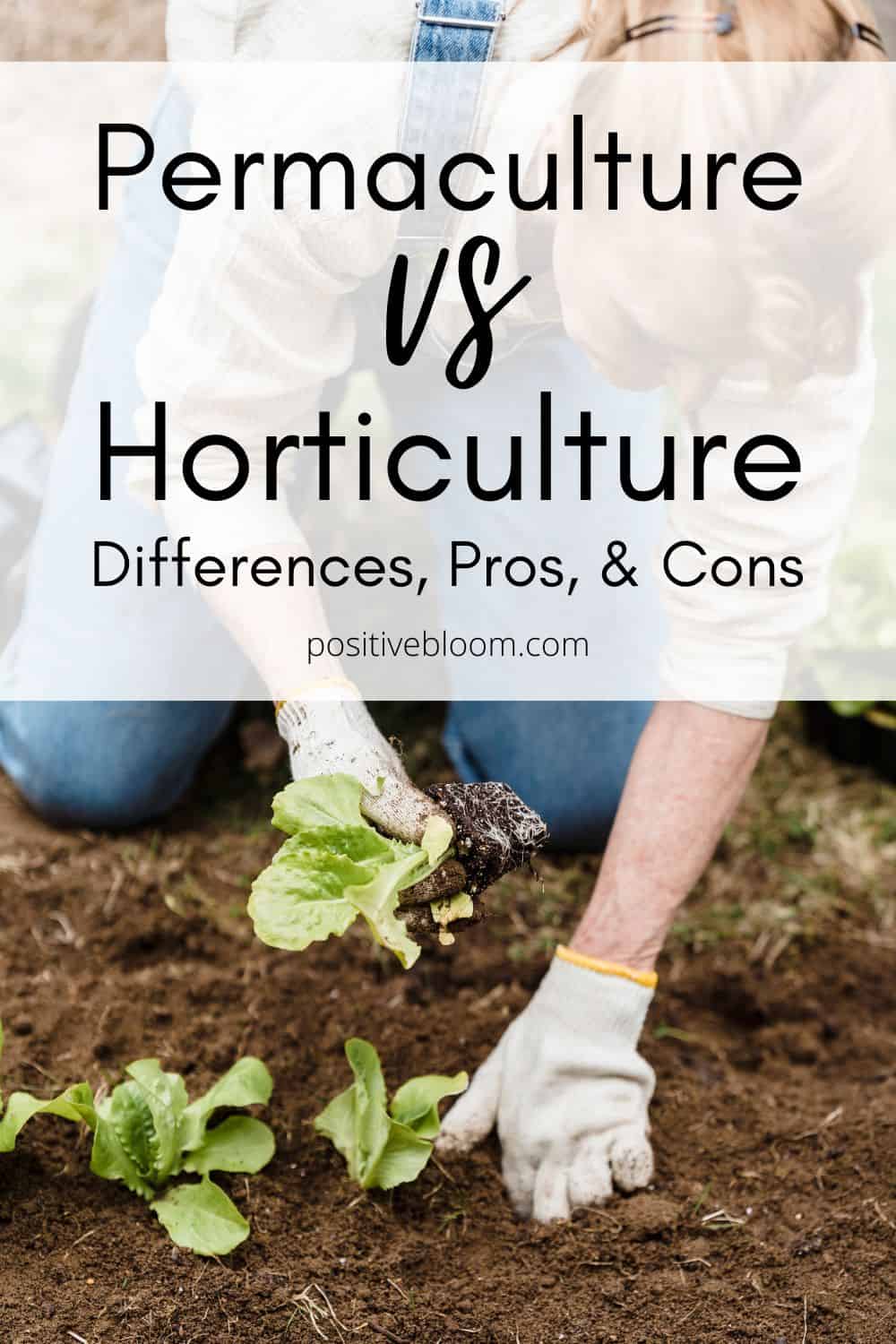Knowing how and when you should plant certain vegetables, and how to care for your houseplants, is very important. Understanding different gardening terms can broaden your horizons and allow you to discover new branches of gardening.
This article primarily deals with the differences between permaculture vs horticulture, two terms frequently used interchangeably but that don’t represent the same thing.
We’ll also discuss their benefits and drawbacks, so stick around!
Permaculture vs Horticulture
Generally speaking, the main goal of permaculture is to develop and put into practice methods and techniques for accessing natural resources that are beneficial for us and the environment.
The permaculture design is often intertwined with the idea of homesteading (self-sufficient homes).
The primary goal of horticulture, on the other hand, is the mass production of crops for commercial consumption.
However, there are some other differences between the two terms that we’ll discuss in the following chapters.
What Is Permaculture Farming?
We already briefly mentioned what permaculturalists do, but there’s more to it. Permaculture (permanent agriculture) is more of a philosophy than simply a way of growing vegetables.
The fathers of this movement are Bill Mollison and David Holmgren, who first came up with the term permaculture. They defined it as a deliberate creation of agricultural ecosystems that exhibit all the differences and cohesion of natural ecosystems.
This philosophy is designed in such a way as to support the ecosystems and to include all natural systems (biological, ecological, and physical) when devising sustainable human habitats.
Permaculture incorporates principles such as sustainable development, agroforestry, applied ecology, and organic gardening.
It is widely accepted by proponents of sustainable agriculture and the GLM (green living movement) because it is focused on planting perennial crops, using compost instead of store-bought fertilizers, preserving water, etc.
Permaculture Ethics And Guidelines
This movement is a philosophy as well as a design science, so there are ethics and principles of permaculture that bridge the differences and relate humans to ecology.
Each of the following has a couple of notions that we’ll briefly discuss so that you can understand the significance of this movement.
Permaculture Ethics
The primary goal of permaculture is caring for the earth. Regenerating fertility and biodiversity, caring for water and avoiding pollution, building soils (improving soil quality), not using pesticides for pest control, and not exploiting forests are all essential components that help the earth.
However, keeping nature safe is only one aspect of permaculture ethics. Taking care of people is another crucial factor of permaculture.
Creating self-sufficient forest gardens (food forests), vegetable gardens, and using all the resources you can is a good start to creating your own permaculture garden and motivating others to do the same.
Finally, giving back to nature and reinvesting the abundance (fair share) is the last aspect of permaculture ethics. This movement advocates for the reinvestment of the surplus nature gives us, or rather, creating a food production system that will waste as little energy and resources as possible by collecting and using rainwater, composting, sheet mulching, etc.
By implementing this reinvestment, you’ll require fewer inputs, such as fertilizers, which will save you money and keep nature healthy at the same time.
Permaculture Principles
Unlike horticulture, permaculture has design principles. The first one is to monitor the land, to understand how weather conditions affect it, which plants can flourish on that land, what animals live there, etc.
The second principle coincides with the ethics of permaculture, or rather, managing the surplus nature gives us. This principle teaches us to collect and reuse rainwater, create our own compost instead of using artificial blends, and use it to fertilize the soil.
It all depends on the type of soil you have, but permaculture helps you understand the needs of your growing medium so that you can work out the best solution.
The last principle of permaculture is multi-functionality. A step away from monoculture into companion planting is an excellent example, as you’ll attract pollinators and other beneficial insects, repel unwanted bugs, etc.
Permaculture applies the above-mentioned set of principles to an increasing number of areas in rewilding, regenerative agriculture, and community resilience (sustainability).
What Is Horticulture Gardening?
Horticulture focuses on the commercial production of crops, using those fruits, vegetables, and flowers, and marketing.
Horticultural farming practices encompass all forms of gardening, primarily focused on commercial production. Horticulture is actually a branch of botany that deals with horticultural plants and is mainly referred to as horticultural science.
Different Branches Of Horticulture
Horticulturists around the world recognize seven major branches: olericulture, pomology, viticulture, ornamental horticulture, turf management, arboriculture, and postharvest physiology.
Olericulture
This branch refers to the production of vegetables and everything it entails (planting, harvesting, preserving, processing, and marketing).
Commonly produced veggies include tomatoes, potatoes, lettuce, etc.
Pomology
Pomology deals with planting, harvesting, preserving, processing, and marketing fruits and nuts (from almonds and raspberries to apples and peaches).
Viticulture
This branch is also known as wine growing, and it is mainly concerned with the production of grapes for making wine.
Ornamental Horticulture
Producing and planting ornamental plants is known as ornamental horticulture, and it can be divided into two subcategories: landscape horticulture and floriculture.
The first subcategory focuses on planning, creation, and maintenance of landscapes, and using landscape plants such as geraniums, peonies, ornamental grasses, etc.
Floriculture, on the other hand, is concerned with the production and maintenance of container plants, annual flower beds, and flowers in general.
Turf Management
Turfa management is a branch of horticulture concerned with the creation and upkeep of turf grass for use in sports, recreation, and amenities.
Arboriculture
This type of horticulture deals with perennial trees, shrubs, vines, and other woody plants that are grown and cared for specifically for landscaping and amenity purposes.
Postharvest Physiology
The last major branch of horticulture is concerned with controlling horticultural crops after harvest to prevent deterioration while being stored or transported.
Permaculture Pros And Cons
Of course, everything has a positive and negative side, so we’ll discuss the pros and cons of permaculture in the chart below:
[table id=454 /]
Horticulture Pros And Cons
Just like permaculture has its benefits and drawbacks, as does horticulture, and we’ll discuss them below:
[table id=455 /]
Is Permaculture The Same As Organic Gardening?
Permaculture incorporates organic gardening methods and connects gardening to homes to create an eco-friendly lifestyle.
Organic gardening, as its name suggests, uses natural and organic resources (composting waste of one plant to fertilize other plants).
But, in organic farming and gardening, there is always an inevitable loss during the packaging and transporting. Permaculture minimizes this loss (and the use of fossil fuels) by moving closer to its consumers and reusing their waste.
Final Thoughts
This article discussed the differences between permaculture vs horticulture. Essentially, permaculture is a movement that tends to make green gardening a lifestyle.
Horticulture, on the other hand, simply produces crops for commercial purposes, but it does try to reduce pollution, use organic fertilizers, etc.
Hopefully, these differences can help you choose the best food production system for you.
Until next time!
Like this post? Share or pin it for later!




